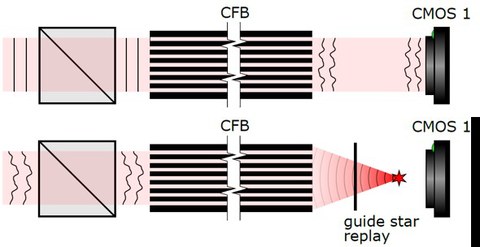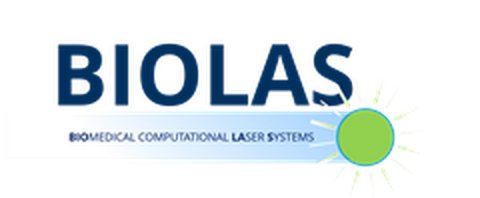Investigation of laser systems for 3D endomicroscopy using coherent fiber bundles
The aim of the project is the fundamental research of a novel endoscopic technique. Flexible endoscopes, witch minimal diameters are desired for sensing and actuating by light with key whole access. Minimally invasive 3D imaging is relevant in biomedicine and production technique. Additionally, fiber based endoscope important in optogenetics and 3D printing techniques. Existing endoscope are based on the evaluation of light intensity and use imaging optics. This makes them inapplicable to many applications.
The aim of project is to evaluate the complex phasor of light instead of using imaging optics. Thus, fiber optic imaging waveguides are employed for transmitting 3D information of light (spatial intensity and phase distribution). This enables flexible endoscopes, which are limited in diameter only by the fiber.
The challenge is to calibrate the light field disturbance during transmission of the fiber, without access to bot fiber facets and in-situ.
A calibration technique, which enables strong fiber bending and uses an integrated fiber reflector, shall be investigated. The information of calibration and object are superposed. Femtosecond laser pulses shall be used for information demultiplexing. This will enable measurements of 3D structures and as well as optogenetic cell stimulation. Receiving wave front shaping shall be explored for a fast single shot 3D imaging without adaptive optics with high data rate.
The investigations regarding the properties for actuation and sensing with the novel endoscope technique will yield exiting new insights, which are of high interest especially in biophotonics.
Staff: J Gürtler, E. Scharf, R. Kuschmierz
Period: 11/20-10/23
R Kuschmierz, E Scharf, N Koukourakis, JW Czarske, Self-calibration of lensless holographic endoscope using programmable guide stars, Optics letters 43 (12), 2997-3000
E Scharf, J Dremel, R Kuschmierz, J Czarske, Video-rate lensless endoscope with self-calibration using wavefront shaping, Optics Letters 45 (13), 3629-3632


